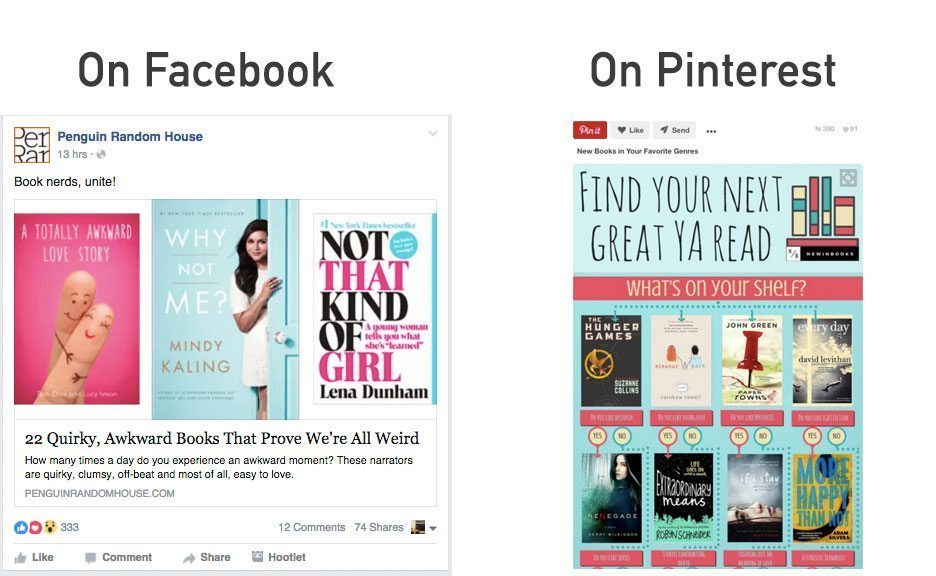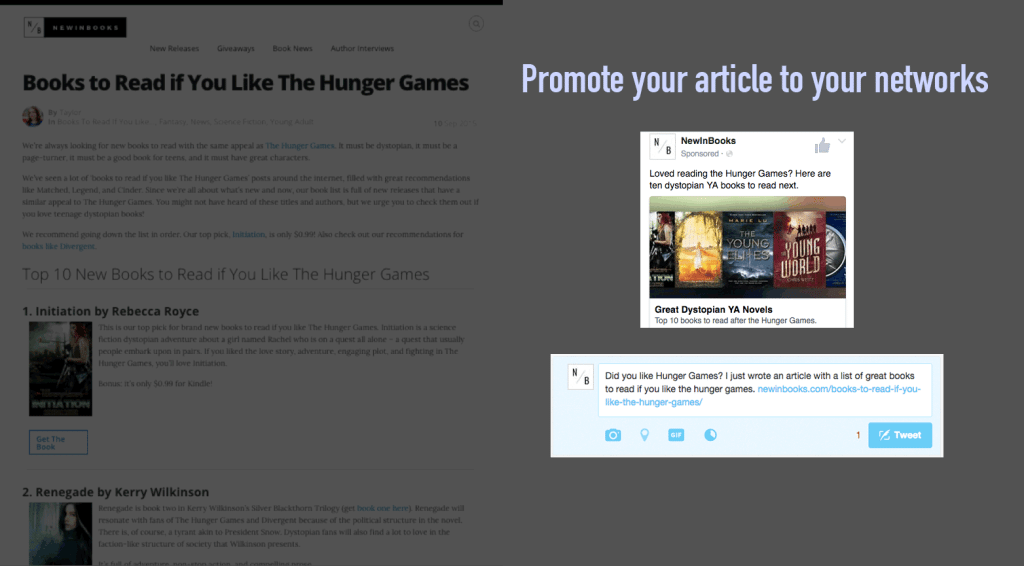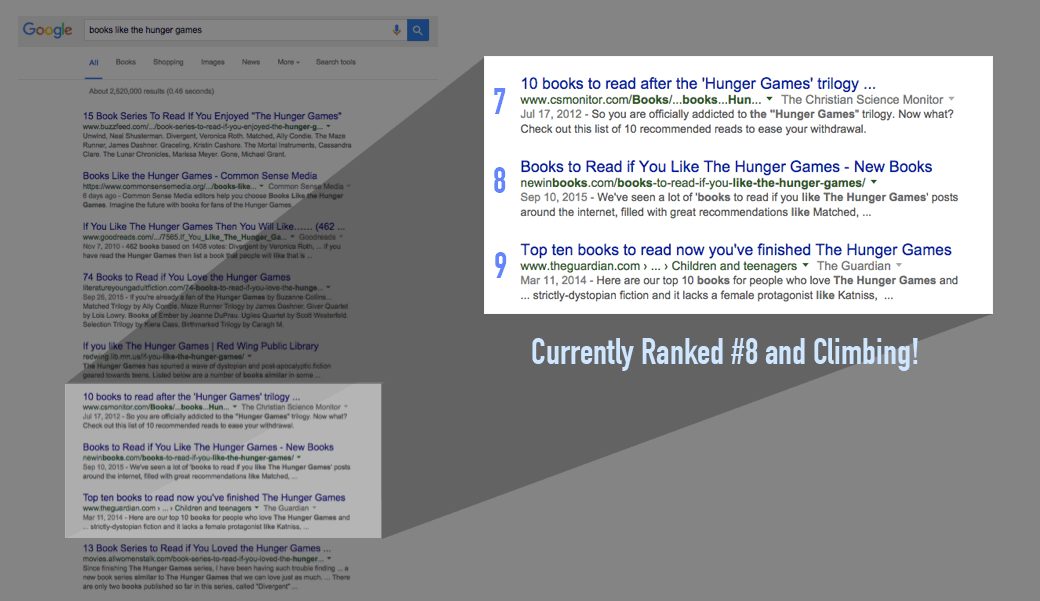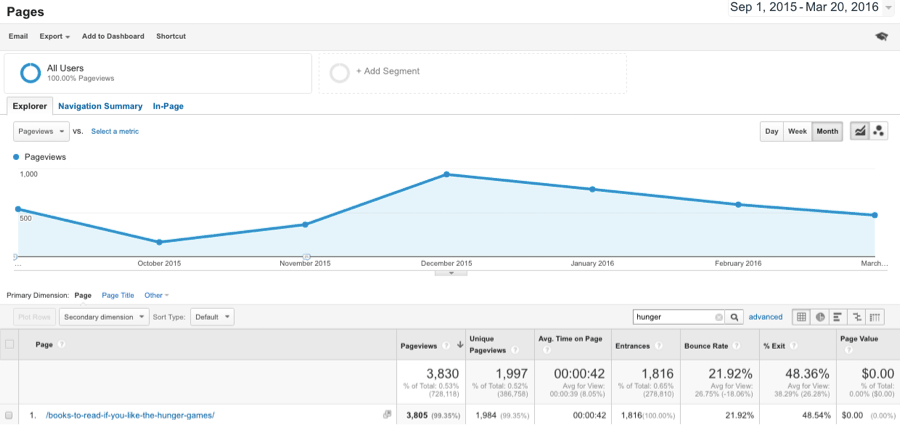You’ve probably heard the term “content marketing” bandied about in the past few years. If you’re still not quite sure what content marketing is, you’re not alone. You may have heard of SEO (search engine optimization) before, and content marketing is very similar. It’s really just the modern term for SEO-like practices that focus more on the written content than on the technical structure of the article. In this article we’ll break down the ins and outs of content marketing and how you can use it as an author to market your ebooks.
What is Content Marketing?
Content marketing, also known as “strategic marketing” is the practice of creating and publishing online content in order to retain and acquire customers. Content is just a fancy word for written articles with text and pictures and sometimes videos. You see content marketing around you all day.
The brands above are creating content that appeals to their target market. They have thought about who they are trying to reach (in these cases: readers) and have written posts that they feel will provide their audience with useful information (in these cases: what books the readers should read next). They use this content to attract the readers to their sites in the hopes of acquiring customers (getting their email address), selling books or making money on advertising or affiliate links.
Creating the actual content (blog post, infographic, etc.) for your content marketing is the first step. The second step is to get your content in front of your target audience. The are a few ways to do this:
Social Media: Post your content to Facebook, Twitter, Pinterest
Organic Search: Optimize your content for search engines so that it will show when someone searches on a specific term
Paid Amplification: Pay to have your content appear in front of an audience on different sites across the web.
Here are the five steps authors can take to create, publish and amplify content that is optimized for both search and social sharing:
Step 1: Find a keyword
Decide which keywords (topics) are relevant for your books and research how many people are searching for those terms. You can use Google’s Keyword Planer Tool to find out how popular a topic is.
For this article we will use the example of a Young Adult dystopian book, similar to The Hunger Games. We go to keyword tool and type in the following terms: “young adult dystopian”, “hunger games books”, “young adult book” to see what people may be searching on that is related to our genre of book. Google shows you related keywords, how many searches per month the term receives and the competition. We looked at these results and found a term that has good search volume (over 500 searches per month) and that can be turned into an interesting article: books like the hunger games
Step 2: Focus on your keyword
Write an article that includes your focus keyword (in our case, this is “Books like the Hunger Games”). Make sure to put the keyword in the Title, the URL, the Meta Description of the article. Make sure to make the article headline interesting – ask yourself “Is this something I would click on?”
We titled our post: Top 10 New Books to read if you like the Hunger Games (our focus keywords are highlighted in red).
Step 3: Share it on Social Media
Publish the article and share it on social media (Facebook, Twitter, Pinterest, Google +). Send the article to friends and supporters and ask them to share the article. This will provide you with the first visitors to your article, spur further sharing and hopefully gets your article in front of a few people who will link to it from their blogs.
Step 4: Get other sites to link to your article
In order for your article to show up in search results, Google must decide that your article is useful for a specific subject. It does this by looking at the information supplied in an article’s title, URL, and meta description, which is why step 2 is important. Another way to convince Google that your article is useful is to get other websites to link to your content. These links on outside blogs are called backlinks. You can get links to your article by sending your piece to book bloggers or other online influencers. Every time someone mentions and links to your article on their own blog or website, it’s an additional point in your favor. You can also create a few backlinks yourself by posting your article in forums on Goodreads and other reading sites.
Step 5: Monitor your Google rank and your book sales
You can check if your article is ranking for your target keyword by typing that keyword into Google and then looking to see how high on the list your article appears. We are #8 for “Books to Read if you like The Hunger Games”.
Use Google Analytics to monitor traffic to your post. Here is a screenshot from our Google Analytics account:
You can see in the graph above that when we first published and shared the article in October we saw an initial spike. After the initial publication we did no more amplification, and you see traffic drop in October – at this point the post is not yet ranking very well on Google as it can take 30-60 days for Google to index the content. You see traffic rise in November as the post starts to rank on Google and peak in December due to higher search volume (more people are searching for books in December and early January as they shop for gifts or shop for new books to fill their Kindle). Traffic levels out in January, February and March (March is an incomplete month and will eventually match February levels). We have already garnered almost 2,000 unique page views from this post alone. This traffic will continue into the year, paying dividends well into the future with no additional investment from us.
I Have Content, Now What?
As we see above, you can expect your book sales to experience a small spike when you launch the article, and then, as time goes on, the sales will mirror the traffic (visitors) that come to your article. As you post more content, and more people enjoy your posts, your ranking will climb and so too will your traffic, ultimately leading to sales.
It is important to remember that content marketing is different from price promotion marketing (discounting your book and promoting it aggressively for 24-72 hours) in the following ways:
- Price promotion marketing results in a large spike in sales followed by a return to normalized levels. You need to put focused time, energy and money into promoting your promotion for its duration.
- Content marketing results in a very small spike (if any) followed by consistent and growing sales if you rank organically. You need to put time and energy into researching and writing the post and the initial amplification and backlinks. Your investment continues to pay off for months in the future.
If you don’t have the time or inclination to create this type of content, we can do it for you with our Book Recommendation List.
Have you tried content marketing? Share your experience is in the comments.
Posted 03/24/2016







As you mentioned, content marketing is a long term approach to generating sales. Because it can take time for content to gain traction, it’s important to write content that is “evergreen” if it’s possible, meaning it will be just as relevant next year as it is now.
This is a very honestly written guide. I am currently writing my book, looking into ways to get it in my potential market. Thanks for making it clear to me!
This is a great guide. I’m currently looking at ways to market my published Non-fiction book and getting prepared to launch my new children’s book. Thanks for all the terrific information!